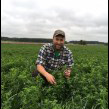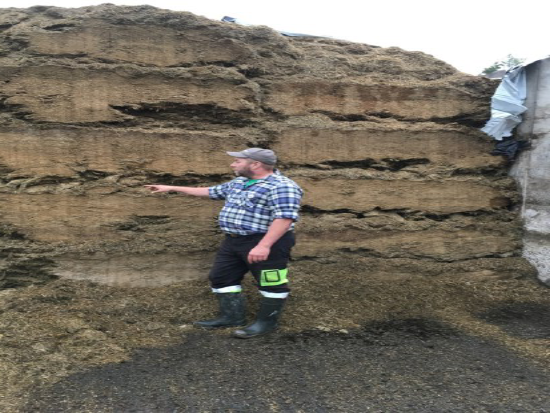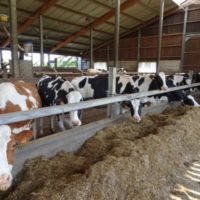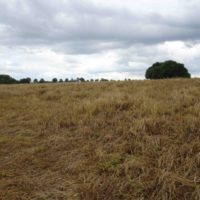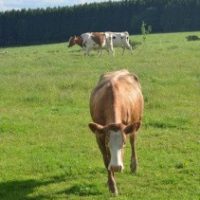Description
Home-grown protein improves profitability for the farm
At Tuna farm, the aim is not to buy concentrate, but to produce high-quality protein from the farm’s own grassland. The protein in the forage must meet the demand of bulls on the farm and be suitable for sale to milk producers.
Grass seed and composition are the foundation. The farm uses a mixture containing several species, where red clover but in particular lucerne and tall fescue are the basis.
Weather data are important. There is often good weather around 20 May and the first cut is taken then. The volume is low, but an early cut benefits the second cut, which is the farm’s best cut with a high content of lucerne. The grass-land is fertilised within a week of cutting. The following cuts are taken at 5–6 week intervals. A fourth cut is taken from fields that are growing well. Silage is made very carefully. The fresh grass, which is rather soft, must be well pre-wilted. Silo packing takes time and is done carefully. The silage is covered with plastic sheeting and then a double layer of plastic. Losses must be minimal.
Sharing in a machinery cooperative gives high capacity, which means that cuts can be made quickly.
Reason for the innovation
Profitability and a burning interest in grassland management
Profitability is a driver. Important components are: A machinery cooperative with three other farms so that capacity is high. A manure tank that can be emptied when the grass needs fertiliser, and not just when it is full. Careful silage making.
Farm description
Environment
- Soil types: Clay soils
- Temperate continental climate
- Altitude: 10 m a.s.l
- Slope: 0 %
- The farm is located in Östergötland, south-east Sweden.
Grassland management
- Grazing: Yes, small scale.
- Temporary grassland with red clover, white clover, lucerne, timothy, festucoid Festulolium and perennial ryegrass.
Structure
- Annual Work Unit: 2
- 300 ha arable land area, of which 100 ha temporary grassland area.
- 20 ha semi-natural grassland area.
Animal performance
- Around 400 milk breed bulls (Holstein) and 20 suckler cows (beef-crosses).
- Bull calves are bought in at 2 weeks of age. Most of these are reared to slaughter weight on the farm.
Why it is working
The drivers behind all work are a strong interest in grassland management and lowering costs.
The resources for this have been built up over time: More bunker silos, large machinery capacity though a cooperative, storage space for slurry and early silage cuts.
